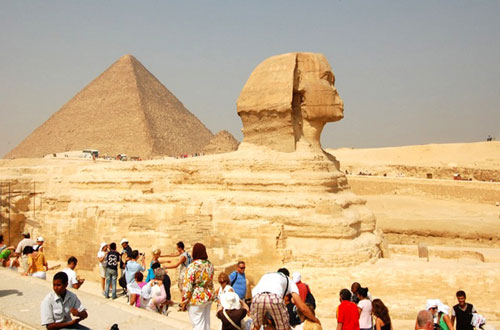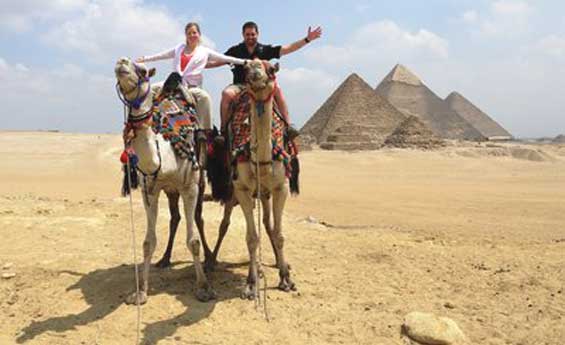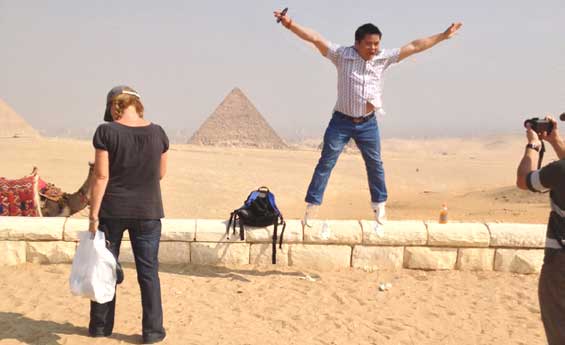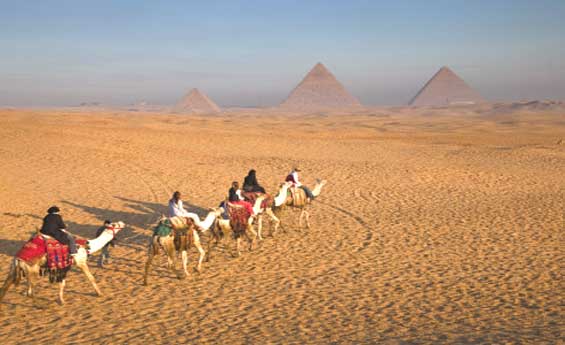Pyramids of Giza

The Three Pyramids of Giza and The Sphinx are The most remarkable attractions in Egypt, The historical pyramids were built during a frenetic period of construction, from roughly 2550 to 2490 B.C. These Giza Pyramids are located to which the bodies of king Cheops, Chephren and Mycerinus were ferried via the Nile for burial in the preparation for their journey to the afterlife. Egypt's pharaohs expected to become gods in the afterlife. To prepare for the next world they erected temples to the gods and massive pyramid tombs for themselves—filled with all the things each ruler would need to guide and sustain himself in the next world.
The pyramid of Cheops is the largest Egyptian pyramid. It is the only one of the Seven Wonders of the Ancient world still in existence. Cheops Pyramid is the largest, oldest and finest of the three and known as “The Great Pyramid. Until the end of the 19th Century, it was the tallest manmade structure in the world. Cheops is the son of Snefru and second ruler of the 4th dynasty. It incorporates about 2.3 million stone blocks, weighing an average of 2.5 to 15 tons each. It is estimated that the workers would have had to set a block every two and a half minutes.
Chephren Pyramid :
However, despite being 4 meters shorter, Cheops’s son and successor’s Pyramid generally evokes a bigger first impression because it is on a higher ground, This is Chephren Pyramid. There are two entrances that lead into the pyramid which are placed one directly above the other. The upper entrance is 50 feet (15m) above the ground. This is the one that is used for entrance now. A narrow passage leads into a large limestone chamber. This passageway descends at a 25 degree angle to the chamber. The walls are lined with red granite. This inner chamber is quite large, 46.5' x 16.5' x 22.5' (14.2m x 5m x 6.9m). The roof of the chamber is set at the same angles as the pyramid face. This is designed to take the weight of the pyramid, as is the relieving chambers in Khufu's pyramid. Apparently the roof designed this way has worked, the pyramid has not collapsed. The lower corridor is directly under the upper corridor. This lower corridor once contained a portcullis, which could be let down to prevent entry. This corridor declines on the same angle as the upper and eventually joins into the upper. Once joined, the passageway leads into the inner chamber. Located in the lower passage is a burial chamber that is apparently unfinished and unused. It is in the bedrock under the pyramid. The passageway leads through this chamber and joins the upper corridor. The top of Chephren pyramid still has some of the limestone casing that once covered the entire pyramid. There may have been a change in the method of positioning the blocks that has kept these pieces still intact. It gives the appearance of a white cap on top of the pyramid.
Mycerinus Pyramid:
It is the smallest Pyramid at pyramids of Giza, though it compensates for its lack of size it is known with its outstanding Valley and funerary Temples. Mycerinus king ruled for around eighteen years. The pyramid was not complete when Menkaure' died. Shepseskaf, who was Menkaure's son, finished the pyramid. To the east of the pyramid is the Mortuary Temple. This temple is fairly well preserved, even though the walls were not encased with granite or marble. It was actually made of red mud bricks and then lined with a thin layer of limestone. A 660m mud-brick causeway connected the Valley Temple to the temple. The causeway is now beneath the sand.














































































 Giza Pyramids and Egyptian Museum Tours
Giza Pyramids and Egyptian Museum Tours  Pyramids, Sakkara and Memphis Tours
Pyramids, Sakkara and Memphis Tours Pyramids of Giza and Sphinx Tours
Pyramids of Giza and Sphinx Tours  Dahshur, Sakkara and Pyramids Tours
Dahshur, Sakkara and Pyramids Tours Camel Ride at the Pyramids area
Camel Ride at the Pyramids area  Pyramids Tours and Lunch Cruise from Ain Sokhna
Pyramids Tours and Lunch Cruise from Ain Sokhna